https://philaholisticclinic.com/skin-problems/what-can-cause-red-spots-on-the-skin/
Red spots on the skin is a very common symptom that can be manifested by many different medical conditions.
Someone may find red spots on the skin for numerous reasons, ranging from allergic responses to heatstroke.
Many causes of red spots on the skin are harmless and clear up on their own. Others may require home or over-the-counter (OTC) treatment.
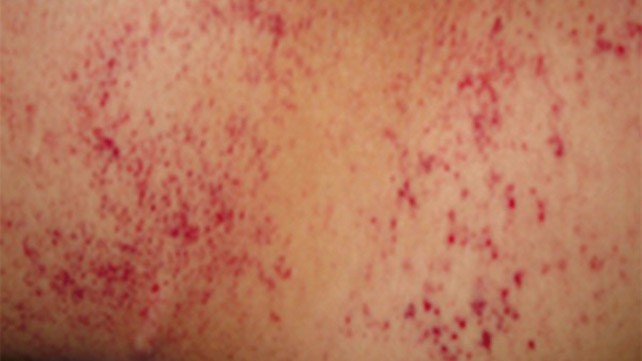
In this article, we discuss some of the possible causes of red spots on the skin, their treatment options, and when to contact a doctor.
When to seek emergency help for red spots on the skin
Outbreaks of red spots on the skin may come in a variety of dimensions, colors, and consistencies.
Not all rashes in the form of red spots on the skin require emergency medical treatment. However, people should see a doctor right away if they have a rash and notice any of the following symptoms:
- red spots on the skin that cover the entire body
- fever
- blisters or open wounds
- difficulty breathing, speaking or swallowing
- swelling of the face, eyes, or lips
- stiff neck
- light sensitivity
- seizures
People should also lookout for new rashes that are painful and affect the eyes, inside of the mouth, or genitals right away.
When in doubt, an individual should seek the opinion of a primary care provider or a board-certified dermatologist.
Heat rash manifests by red spots on the skin
A heat rash or milia occurs when sweat glands become blocked, trapping sweat in the deep layers of the skin.
While anyone can have a heat rash, the condition is most common in infants and toddlers with immature sweat glands.
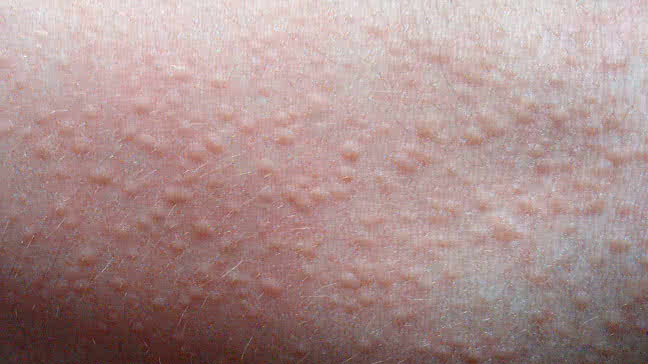
Symptoms of heat rash include:
- clusters of red spots on the skin in the forms of small red bumps called papules
- firm, flesh-colored bumps
- an itchy or prickly sensation
- mild or absent sweating in the affected area
- inflammation and soreness
- dizziness
- nausea
Treatment
The rash usually clears up within 24 hours.
Treatment usually includes the use of lotions to relieve itching, irritation, and swelling.
People can also keep their skin cool and avoid tight clothing.
Keratosis pilaris commonly causes red spots on the skin
Keratosis pilaris (KP) is a mutual skin condition that manifests by small red spots on the skin or white or multi-colored rashes on the skin.
Most often the outer parts of the upper arms are affected. It can also affect the forearms and upper back, but this is less common.
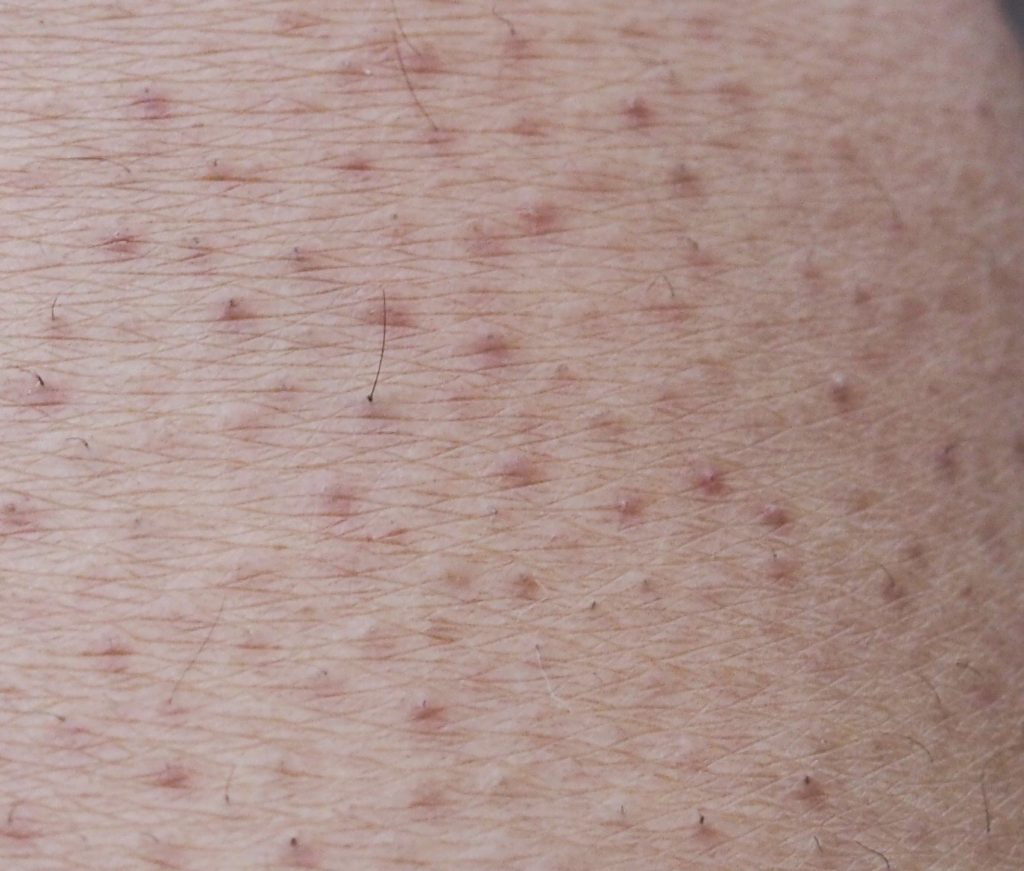
Symptoms of KP include:
- Skin that is rough or dry to the touch
- Spots of small, painless red spots on the skin
- Itching
Treatment
People can treat symptoms of KP with:
- moisturizers that contain urea or lactic acid
- Alpha hydroxy acid
- glycolic acid
- lactic acid
- retinoids
- salicylic acid
- Laser or light therapy
Contact dermatitis – most common condition that causes red spots on the skin
Contact dermatitis occurs when a person comes in contact with a substance that irritates their skin or causes an allergic reaction.
Symptoms of contact dermatitis vary depending on the trigger and severity of the reaction.
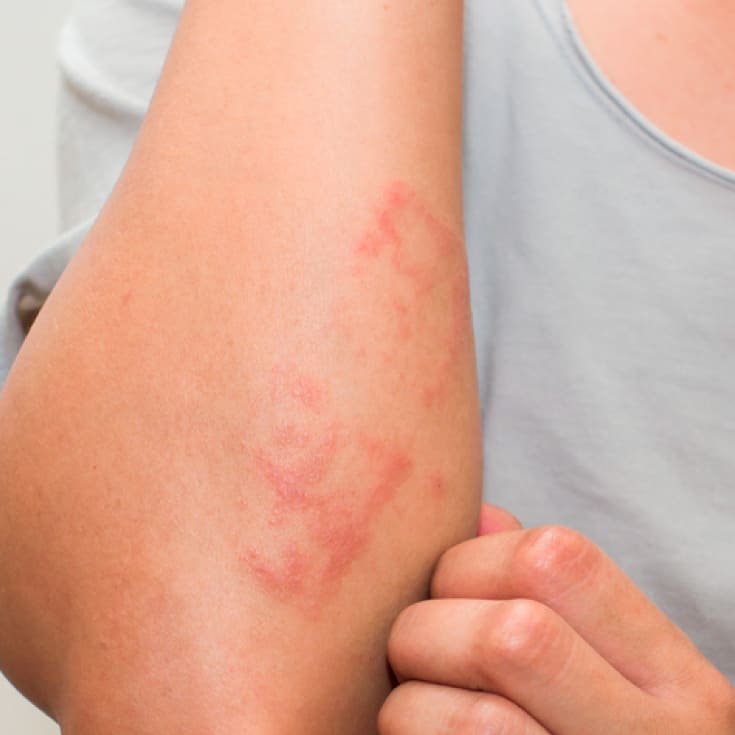
Symptoms of contact dermatitis include:
- a rash that appears in geometric patterns or shapes
- dry skin that is peeling and cracking
- a light, red skin rash
- A collection of small red spots on the skin
- Pimples or enormously itchy stripes on the skin
- Severe burning, rigidity, or fiery sensation
- Watery blisters that ooze and crust
- dark solidified skin
- Sensitivity to sunlight
Treatment
Treatment for contact dermatitis depends on the cause and severity of symptoms.
Mild to moderate signs fade when the patient avoids interaction with the irritant or the allergen. If possible, people should:
- Avoid skin care products that contain harsh or irritating chemicals
- Avoid nickel- or gold-plated jewelry
- avoid foods and drugs that cause allergic reactions
- wear protective clothing in the work environment or areas with poisonous plants
If the dermatitis is confined to a small area, a person may apply a 1% hydrocortisone cream.
Your doctor may prescribe stronger topical or oral antihistamines for people who don’t respond to OTC medications
Atopic dermatitis
Atopic dermatitis, also known as eczema, is a chronic inflammatory disease of the skin.
There are many different types of eczema, including:
- Follicular eczema: this form of eczema distresses the hair follicles eventually causing hair loss.
- Papular eczema: it presents as small red bumps on the skin that health professionals call papules.
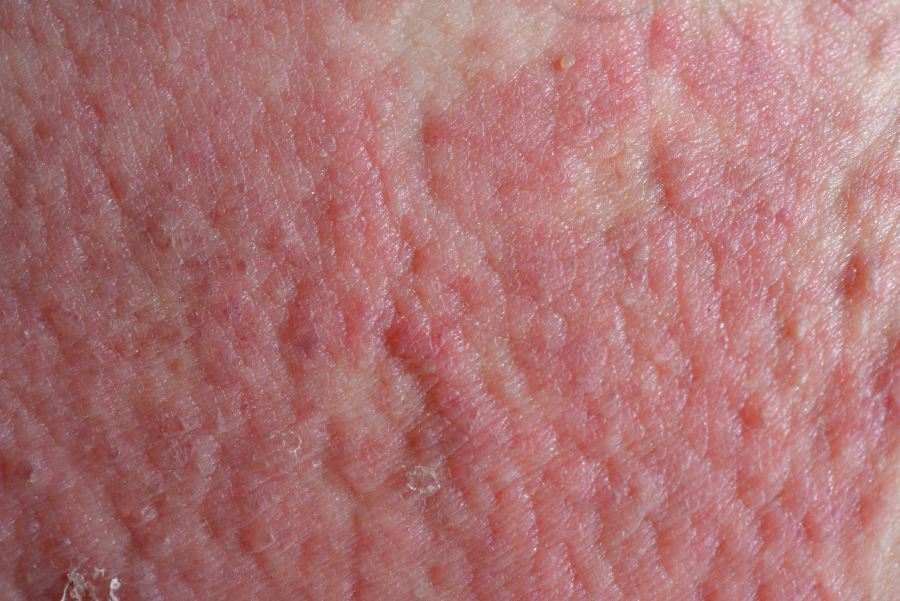
Along with red spots on the skin, eczema can cause:
- extreme itchy skin
- heat and swelling of the skin
- dry and scaly skin
- clusters of small bubbles filled with fluid
- bubbles that leak fluid and form scabs
Treatment
People can control the symptoms of atopic dermatitis and even prevent outbreaks with the following treatments:
- taking prescription drugs, such as steroids and antihistamines
- in phototherapy or phototherapy
- apply a moisturizer to treat dry and chapped skin
- use an unscented, non-irritating laundry detergent
- avoid triggers such as dry air, stress, and allergens
For severe atopic dermatitis that does not respond to the above treatment options, a person should consult an accredited dermatologist.
Bathing in bleach, which requires the use of half a cup of bleach per 40-gallon tub, 1 to 2 times a week can also help.
Rosacea
Rosacea is a skin condition that causes skin irritation, redness, and small pimples.
Although anyone can develop rosacea at any time in their life, it most commonly occurs in adults between the ages of 30–60 years, people with fair skin, and those going through menopause.
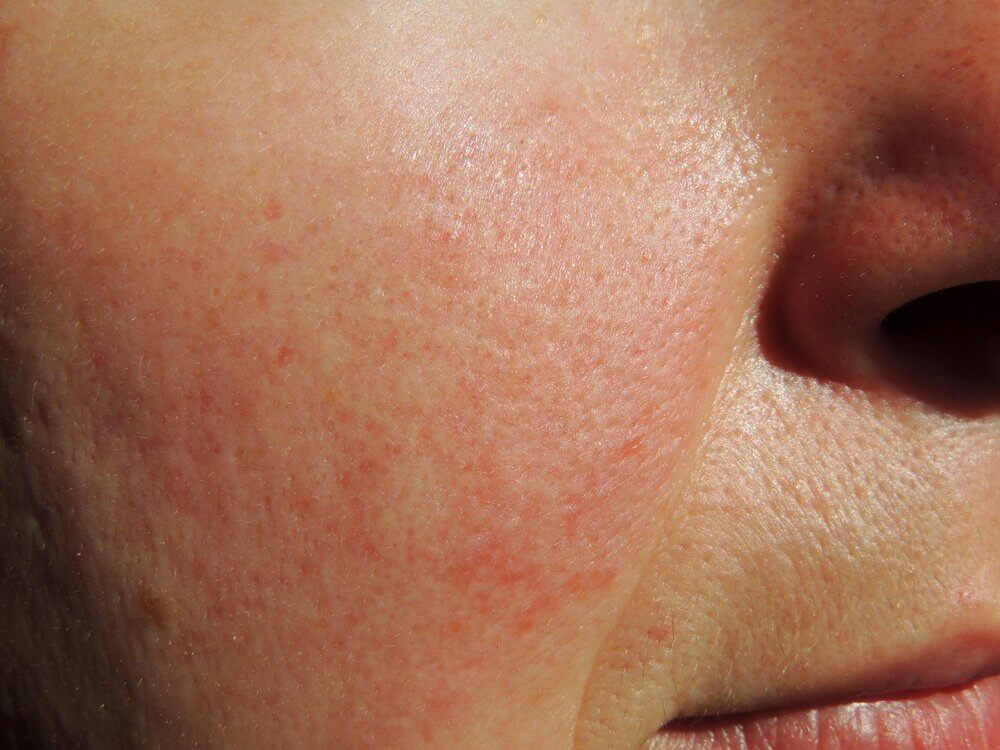
Symptoms of rosacea include:
- itchy or red skin on the forehead, nose, cheeks, and chin
- blood vessels visible under the skin
- clusters of small red spots on the skin or pimples
- thick facial skin
- red, itchy, or watery eyes
- inflammation of the eyelids
- Blurred vision
Treatment
People can treat rosacea with a variety of strategies and medications. Some strategies that can help relieve rosacea include:
- avoid triggers, such as ultraviolet rays, alcohol, and harsh chemicals
- wash the face with pH balanced cleansers
- use moisturizers frequently
- wear a broad-spectrum sunscreen with SPF 30 or higher
People should also avoid caffeinated products and spicy foods, as they can also trigger rosacea.
Medical treatments for rosacea include:
- brimonidine tartrate
- azelaic acid
- metronidazole
- electrosurgery
- light therapy
- topical ivermectin
- oral tetracyclines
Infections that may cause red spots on the skin
Some infections can also lead to red spots on the skin.
If a person suspects a skin infection, they should see a doctor.
Examples:
Chickenpox or shingles
The chickenpox virus causes these infections, which cause red, itchy, fluid-filled blisters that can appear anywhere on the body.
Chickenpox usually occurs in infants and young children. However, teenagers and adults can also develop chickenpox.
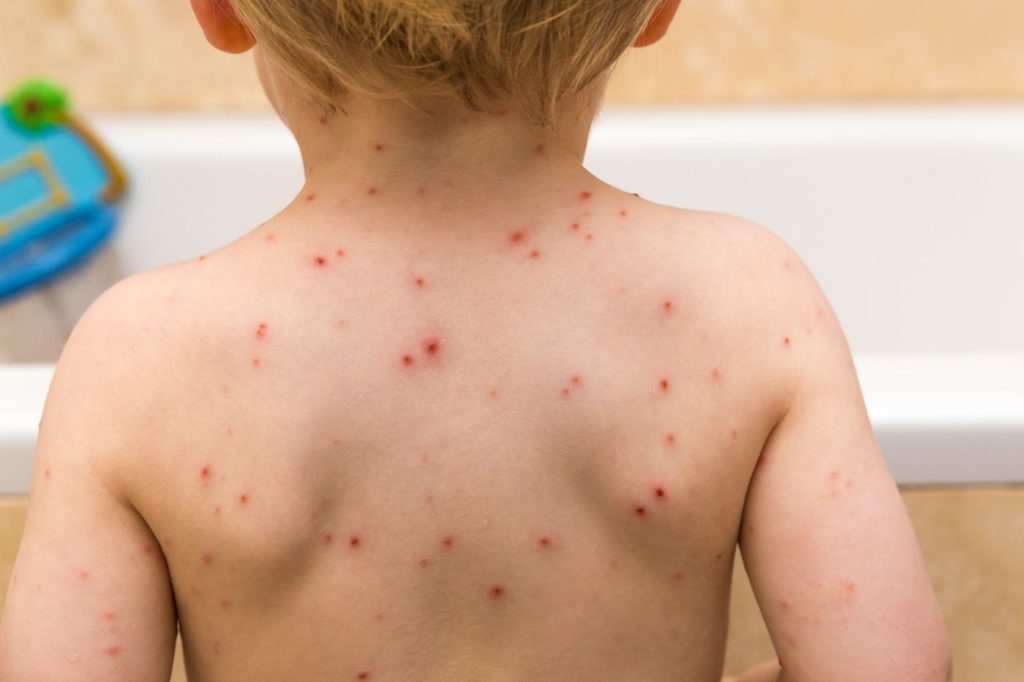
Shingles occur in adults who have already had chickenpox. Shingles usually affect one area on one side of the body, according to the National Institute on Aging.
Rubella
This contagious viral infection causes a characteristic rash of small red or pink spots on the skin.
The rash usually starts on the face and then spreads to the trunk, arms, and legs. Rubella infections also cause fever, headache, and swollen lymph nodes.
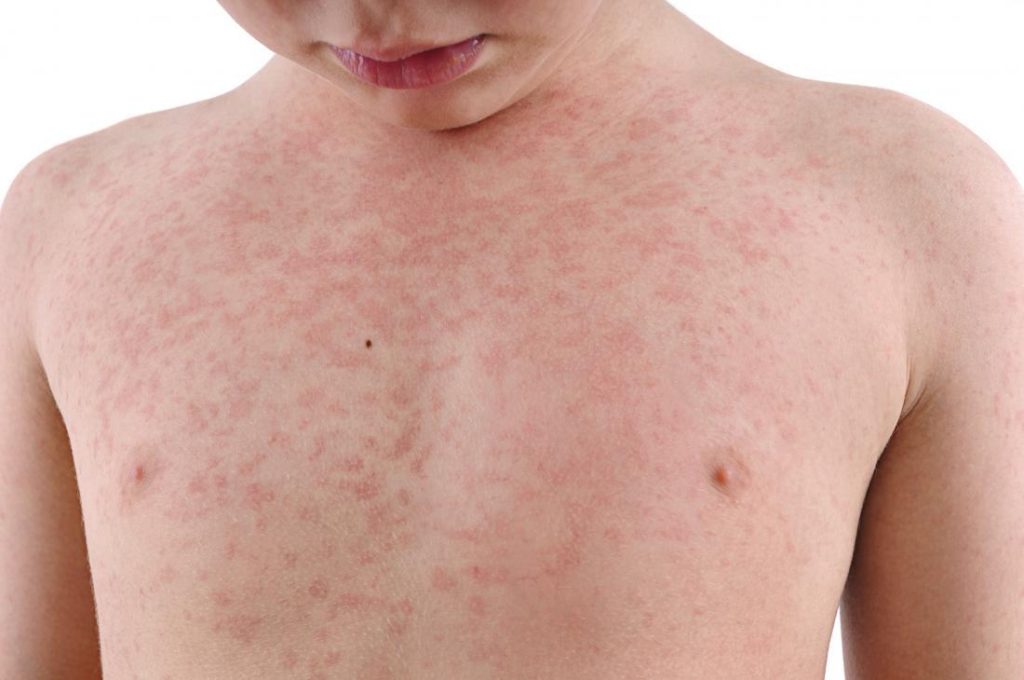
Meningitis
Meningitis is a medical emergency. It is an inflammation of the membranes that cover the spinal cord and the brain. It usually occurs due to a bacterial or viral infection.
Symptoms of meningitis include:
- fever
- stiff neck
- headache
- nausea
- sensitivity to light
- confusion
- vomiting
The rash doesn’t always appear. However, if it does, the person may notice small pink, red, brown, or purple stings on the skin. It will also not fade if someone rolls a glass over it.
MRSA (staph) infection
The CDC describes methicillin-resistant Staphylococcus aureus (MRSA) as “a kind of bacteria resilient to numerous antibiotics.”
MRSA frequently affects the skin, causing painful areas of red spots on the skin. People may also experience pus drainage from the affected skin and fever.
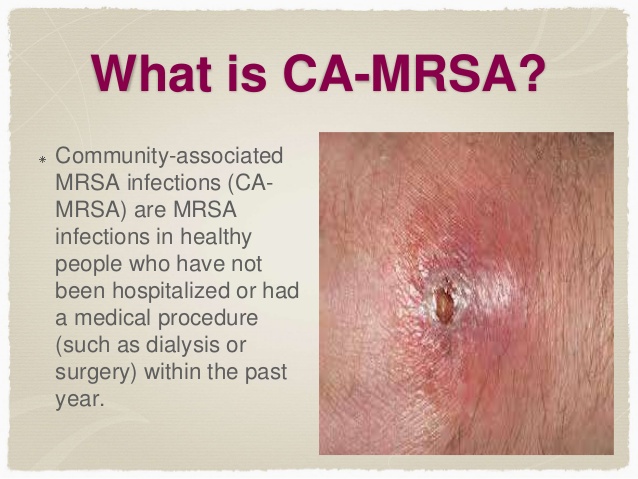
Other bacterial skin infections can also cause painful and inflamed areas of the skin. If a person suspects they have a skin infection, they should see their doctor.
Scarlet fever
Streptococcus bacteria cause this infection.
These bacteria live naturally in the nose and throat. They cause a red rash on the neck, armpit, and groin. The rash consists of small red spots on the skin that are rough to the touch.
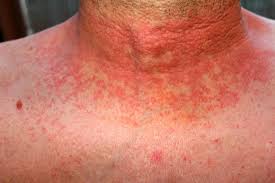
When to contact a doctor regarding red spots on the skin
If a person suspects a skin infection, they should always see a doctor.
People should also talk to their doctor if their rash does not improve despite over-the-counter or home treatments.
People should also seek medical attention if they have a skin rash with any of the following symptoms:
- heat
- severe pain in the head or neck
- joint pain or stiffness
- labored breathing
- frequent vomiting or diarrhea
- confusion of consciousness
- dizziness
Home remedies for red spots on the skin
If a person suspects a skin infection, they should consult a doctor before trying home remedies.
To soothe and treat rashes, people can try the following home treatments:
- Use mild, unscented soaps, body washes, and detergents
- Avoid bathing or showering in hot water
- Keep the affected skin dry and clean
- Wear loose-fitting, breathable clothing
- Avoid rubbing or scratching the rash
- Applying a cold compress to relieve swelling and pain
- Apply Aloe Vera to the affected skin to reduce swelling and relieve pain
- Use moisturizers to moisturize dry, flaky skin
Summary
There are several possible causes of red spots on the skin, including heat rash, KP, contact dermatitis, and atopic dermatitis.
Red spots on the skin can also appear due to more serious conditions, such as a viral or bacterial infection.
If people suspect they have a skin infection, they should see a doctor instead of using home remedies.
For professional help contact Philadelphia Holistic Clinic and schedule your appointment with Dr. Victor Tsan. At the clinic, we use only natural forms of treatment including acupuncture, Chinese medicinal herbs, and homeopathy.
Comments
Post a Comment